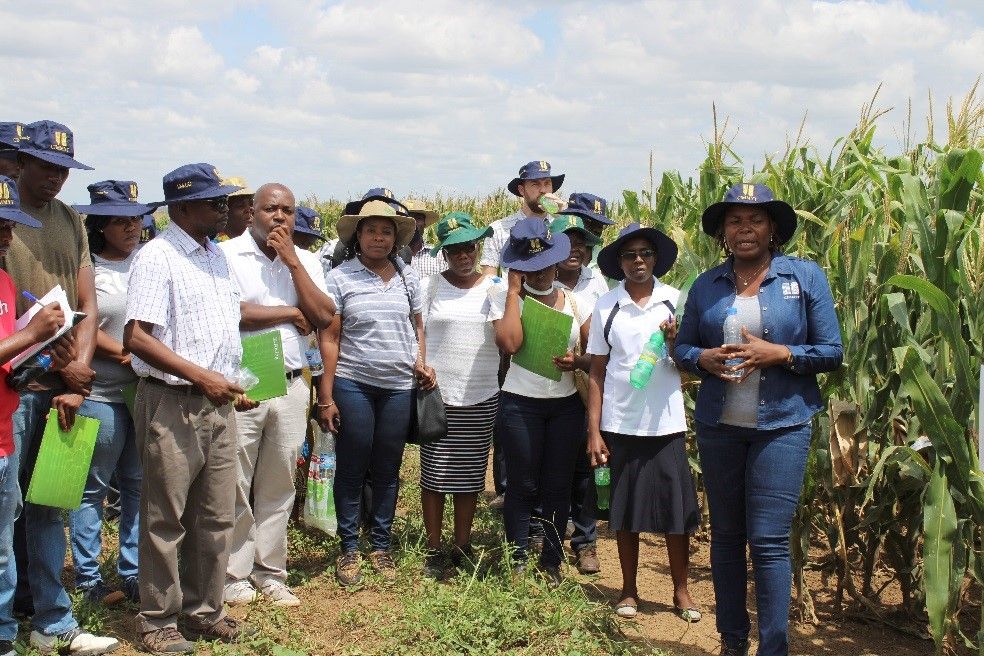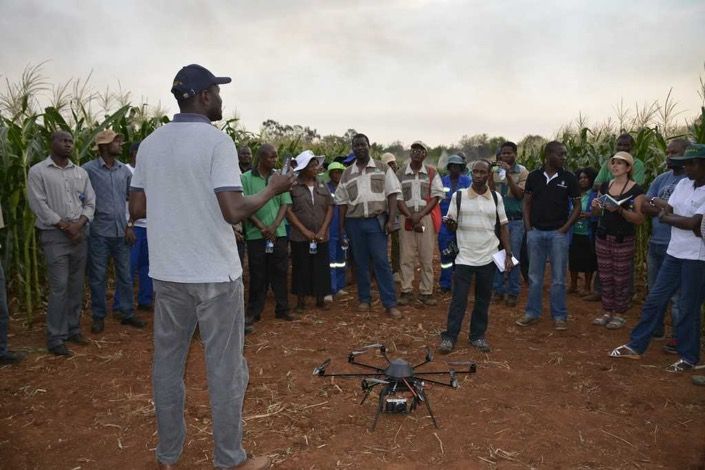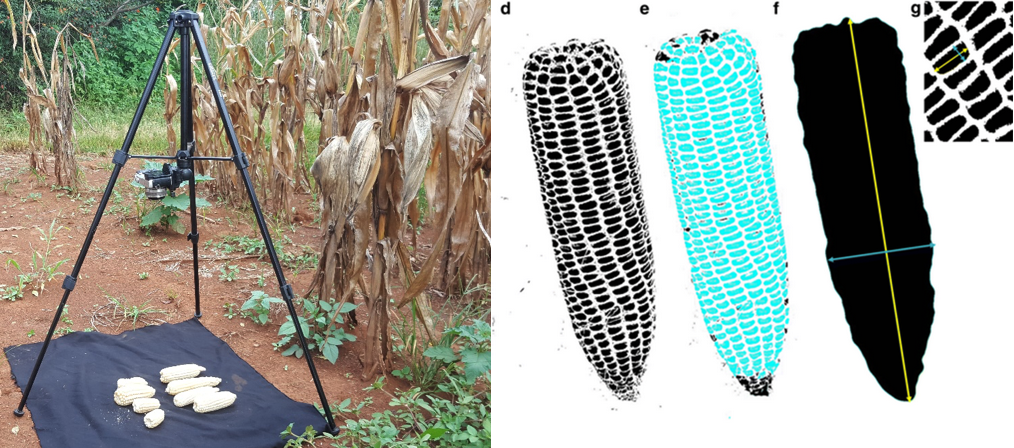What’s new in southern Africa?
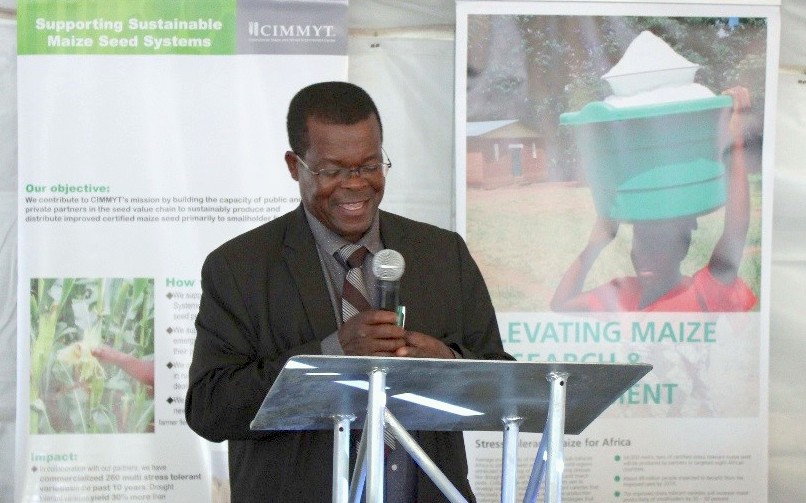
On March 14, 2019, over 200 of the International Maize and Wheat Improvement Center’s (CIMMYT) partners in southern Africa, including national research organisations, private seed companies and funders, attended the annual partners field day in Harare, Zimbabwe.
“For the last 34 years, CIMMYT’s regional office has expanded its research work, from maize breeding to sustainable cropping practices and recently appropriate mechanization and post-harvest,’’ said Cames Mguni, Director of Zimbabwe’s Department of Research and Specialist Services. “The development of drought and heat tolerant maize varieties helps farmers get better yields and cope better during drought years such as the current 2018/19 season.”
Elijah Nyabadza, Dean of the University of Zimbabwe’s Faculty of Agriculture, highlighted the strong collaboration between the University and CIMMYT in conducting joint research and building cutting-edge skills of the next generation of agricultural scientists and practitioners in the region.
Welthungerhilfe country director Regina Feindt said the partner field day was ‘’a very valuable experience and a great opportunity to gain technical know-how and exchange with colleagues across the region.’’
CIMMYT showcases research impact
At the event, CIMMYT country representative for Zimbabwe Cosmos Magorokosho walked partners through breeding lines that include special lines testing for resistance to diseases such as fall armyworm, maize streak virus and weevil. Maize breeder Amsal Tarekegne explained how, in product development, various inbred lines are combined to create new hybrids. These new hybrids, added seed systems specialist Peter Setimela, are made available to smallholder farmers for performance testing for stress tolerance and nutritional traits under different environments before being released to seed companies for multiplication.
Two Zimbabwean seed companies present at the field day highlighted the benefits of collaboration with CIMMYT. Chrispen Nyamuda, an agronomist from Zadzamatura seed company, explained that many varieties popular with farmers, which are heat-tolerant and resistant to diseases like maize streak virus and grey leaf spot disease, were developed thanks to their collaboration with CIMMYT. Another partner from Mukushi Seeds described the working partnership with CIMMYT as mutually beneficial. “We exchange lines, plant in different environments and share the results,” he explained. “We are also tapping germplasm from the world through CIMMYT’s global reach.”
Mainassara Zaman-Allah and Jill Cairns, CIMMYT’s high throughput phenotyping experts, elaborated on how cost-effective remote sensing technologies significantly reduce costs for screening for specific traits and assessing the potential extent of damage caused by pests such as fall armyworm.
Over the last couple of years, CIMMYT has intensified maize breeding efforts aimed at improving the nutritional value of maize, particularly higher content in provitamin A and better quality protein. Maize breeder Thokozile Ndhlela explained that more than 15 new hybrids with higher levels of provitamin A have been released in southern Africa, including five in Zimbabwe.
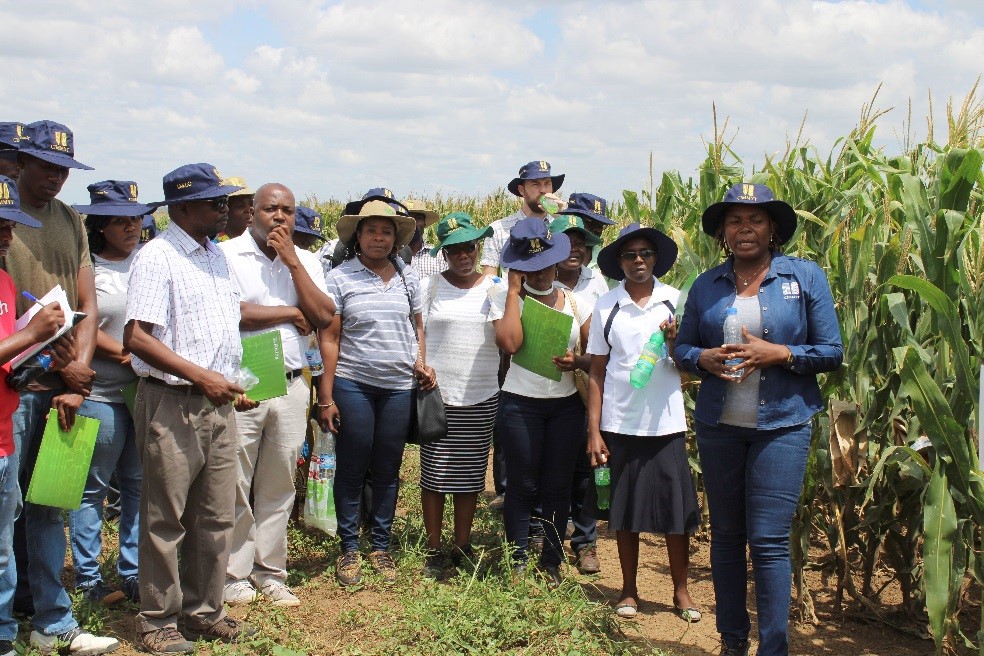
Agronomists Christian Thierfelder and Isaiah Nyagumbo shared some conservation agriculture techniques adopted by smallholder farmers. Farmers can realize better yields and improve their climate resilience by combining conservation agriculture principles such as minimum soil disturbance, crop rotation and soil cover, with use of stress tolerant maize varieties, appropriate mechanization and other complementary practices. Frederic Baudron, who leads the Farm Mechanization and Conservation Agriculture for Sustainable Intensification (FACASI) initiative, explained how small mechanization like two-wheel planters could address labour shortages, reduce drudgery and generate opportunities for rural youth. Significant drudgery reductions have already been observed in wheat planting in Rwanda, and in post-harvest operations like shelling and threshing in Ethiopia and Zimbabwe.
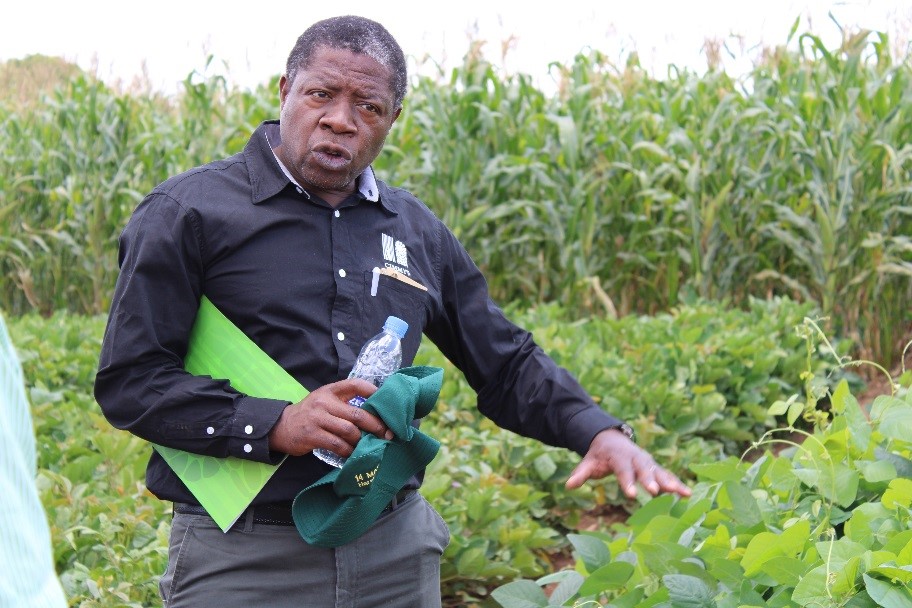
The International Maize Improvement Consortium one year on
Following the annual partners field day, members of the International Maize Improvement Consortium (IMIC) held a field day to select varieties from the IMIC Southern Africa demo plot, which carries a wider selection of materials. Launched in May 2018, IMIC is a public-private partnership initiative established as part of CIMMYT’s mission to increase seed breeding and production innovations.
Participating IMIC members came from seed companies based in Angola, Egypt, Ethiopia, Kenya, Nigeria, Tanzania, Uganda, Zambia and Zimbabwe. At the field day, they were advised by research associate Obert Randi on the layout of the demonstrations for materials under development for different traits, resilience to fall armyworm and maize streak virus, materials improved for vitamin A and quality protein and stress tolerant lines.
After going through the selections, participating IMIC members proceeded to the Quarantine Facility in Mazoe, where they explored around 2,300 double haploid lines undergoing screening maize lethal necrosis (MLN) as well as multiplication for distribution to non-MLN prevalent countries.
The final part of the field day provided space for the members to share research learnings and input on how to move the consortium forward. The field day concluded with an inaugural meeting of the steering committee chaired by CIMMYT regional representative for Africa Stephen Mugo, where participants discussed a number of issues including membership, procedures for conducting field days, training and research prioritization.
Both field days offered an opportunity to highlight the extended impact of CIMMYT’s research in southern Africa through strong partnerships and commitment to research on maize breeding, sustainable farming practices, mechanization and socio-economic impacts of all programming.
